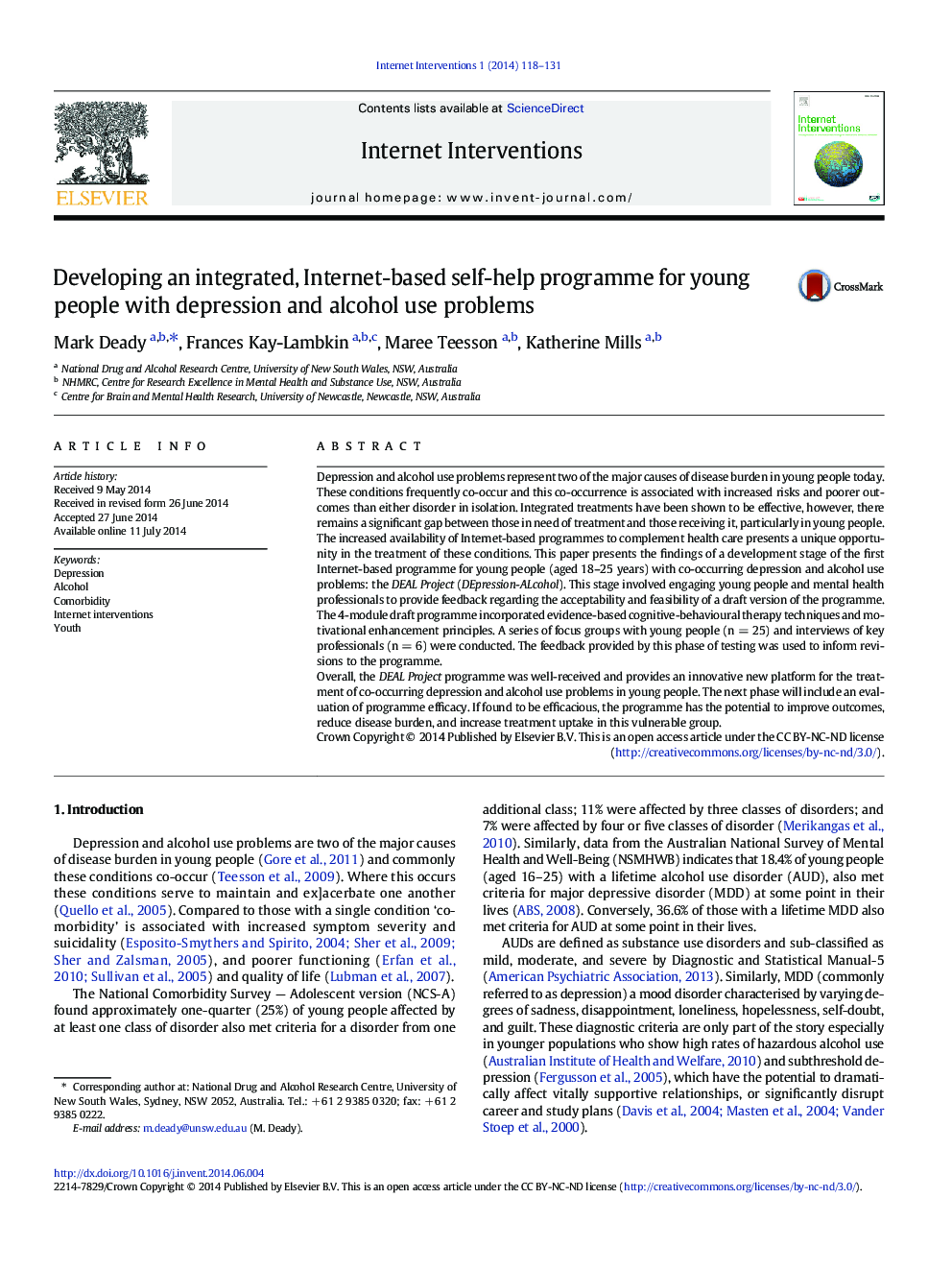| Article ID | Journal | Published Year | Pages | File Type |
|---|---|---|---|---|
| 557156 | Internet Interventions | 2014 | 14 Pages |
•Overall, the DEAL Project programme was well-received by young people and experts.•The programme was found to be acceptable, and have potential utility.•Major concerns related to program engagement and motivation.•Modifications pertained to visual elements, simplification, reminders and summaries.
Depression and alcohol use problems represent two of the major causes of disease burden in young people today. These conditions frequently co-occur and this co-occurrence is associated with increased risks and poorer outcomes than either disorder in isolation. Integrated treatments have been shown to be effective, however, there remains a significant gap between those in need of treatment and those receiving it, particularly in young people. The increased availability of Internet-based programmes to complement health care presents a unique opportunity in the treatment of these conditions. This paper presents the findings of a development stage of the first Internet-based programme for young people (aged 18–25 years) with co-occurring depression and alcohol use problems: the DEAL Project (DEpression-ALcohol). This stage involved engaging young people and mental health professionals to provide feedback regarding the acceptability and feasibility of a draft version of the programme.The 4-module draft programme incorporated evidence-based cognitive-behavioural therapy techniques and motivational enhancement principles. A series of focus groups with young people (n = 25) and interviews of key professionals (n = 6) were conducted. The feedback provided by this phase of testing was used to inform revisions to the programme.Overall, the DEAL Project programme was well-received and provides an innovative new platform for the treatment of co-occurring depression and alcohol use problems in young people. The next phase will include an evaluation of programme efficacy. If found to be efficacious, the programme has the potential to improve outcomes, reduce disease burden, and increase treatment uptake in this vulnerable group.
